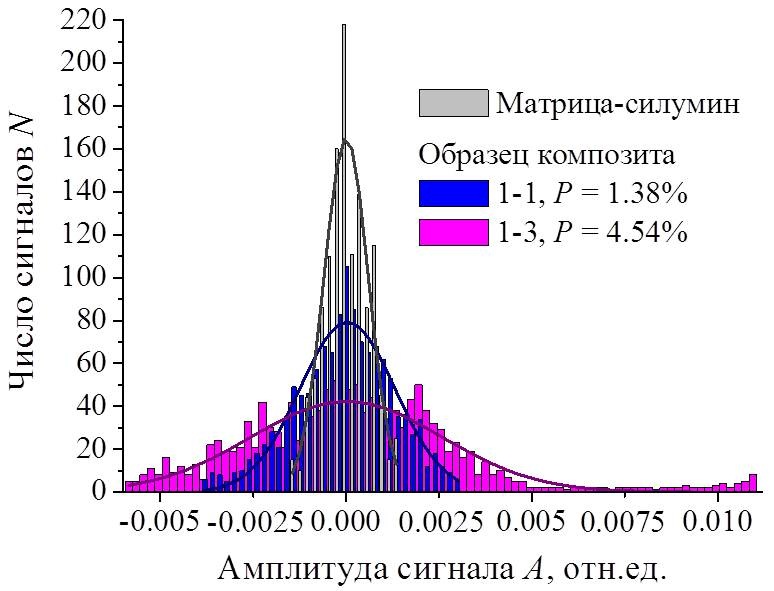Podymova N.B., Kalashnikov I.E., Bolotova L.K., Kobeleva L.I.

This work aims at studying the effect of porosity in particulate reinforced metal-matrix composites on the statistical amplitude distribution of backscattered laser-induced ultrasonic pulses in these composites. A special laser-ultrasonic transducer used in experiments combines laser excitation and piezoelectric detection of broadband ultrasonic pulses in composite specimens with only one plane surface available for laser irradiation. We studied stir cast hypereutectic aluminium-silicon alloy A336 matrix composites reinforced with the SiC micro particles (volume fractions of 0.033–0.135) and in-situ reactive cast aluminum matrix composites reinforced with the Al3Ti intermetallic particles (volume fractions of 0.04–0.115). The amplitude distribution width of the backscattered ultrasonic pulse was determined by approximating the experimental data by the Gaussian probability distribution applicable for statistics of large number of independent random variables. The results show that the amplitude distribution width increases with the growth in the specimen porosity independent of sizes and fractions of the reinforcing particles. The empirical relationship between the local porosity and distribution width of the backscattered ultrasonic signal amplitudes was obtained for porosities up to 4.5%. This relationship can be used for nondestructive testing of the local porosity in engineering products fabricated from the studied composite materials. The proposed laser-ultrasonic technique is especially promising for structural health monitoring of particulate reinforced metal-matrix composites during their service.
